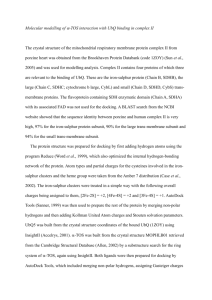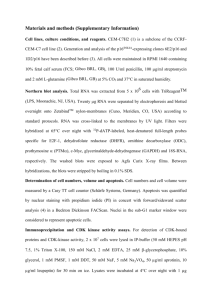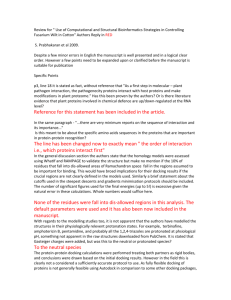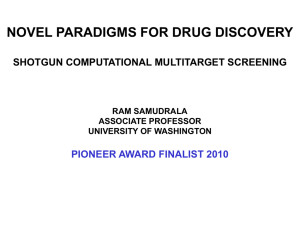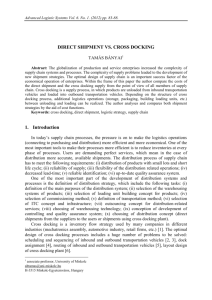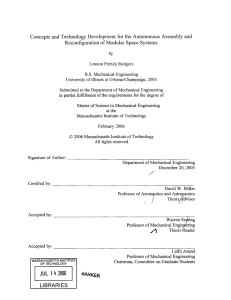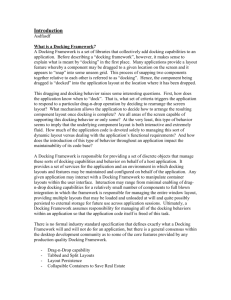Supplementary Methods (doc 99K)
advertisement
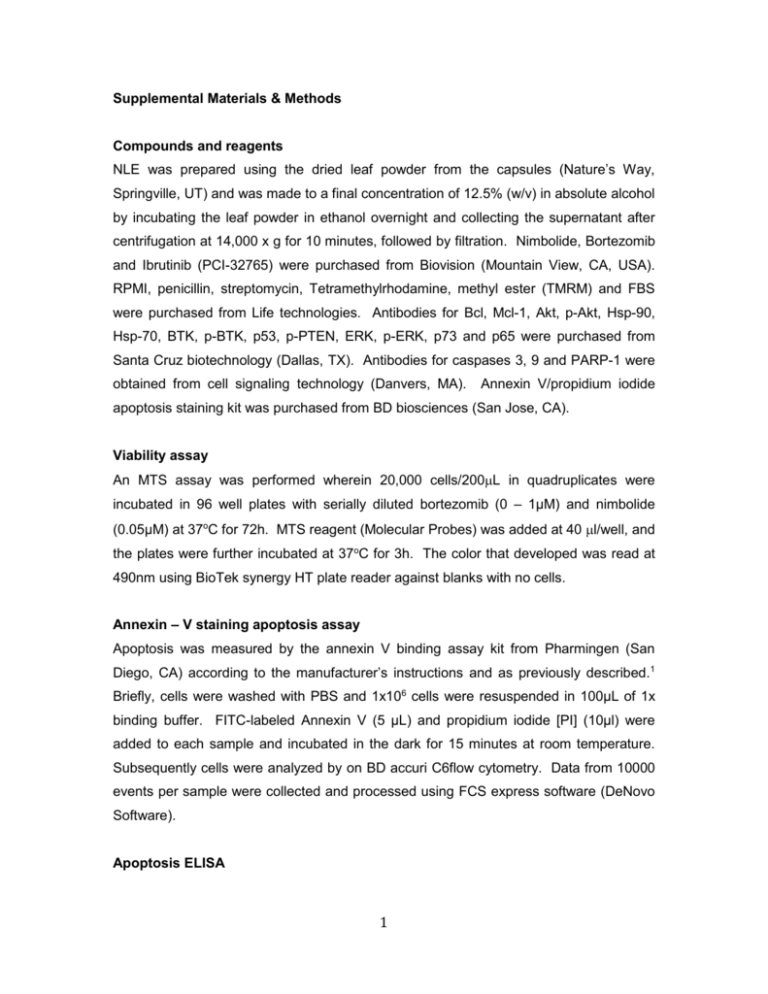
Supplemental Materials & Methods Compounds and reagents NLE was prepared using the dried leaf powder from the capsules (Nature’s Way, Springville, UT) and was made to a final concentration of 12.5% (w/v) in absolute alcohol by incubating the leaf powder in ethanol overnight and collecting the supernatant after centrifugation at 14,000 x g for 10 minutes, followed by filtration. Nimbolide, Bortezomib and Ibrutinib (PCI-32765) were purchased from Biovision (Mountain View, CA, USA). RPMI, penicillin, streptomycin, Tetramethylrhodamine, methyl ester (TMRM) and FBS were purchased from Life technologies. Antibodies for Bcl, Mcl-1, Akt, p-Akt, Hsp-90, Hsp-70, BTK, p-BTK, p53, p-PTEN, ERK, p-ERK, p73 and p65 were purchased from Santa Cruz biotechnology (Dallas, TX). Antibodies for caspases 3, 9 and PARP-1 were obtained from cell signaling technology (Danvers, MA). Annexin V/propidium iodide apoptosis staining kit was purchased from BD biosciences (San Jose, CA). Viability assay An MTS assay was performed wherein 20,000 cells/200L in quadruplicates were incubated in 96 well plates with serially diluted bortezomib (0 – 1μM) and nimbolide (0.05μM) at 37oC for 72h. MTS reagent (Molecular Probes) was added at 40 l/well, and the plates were further incubated at 37oC for 3h. The color that developed was read at 490nm using BioTek synergy HT plate reader against blanks with no cells. Annexin – V staining apoptosis assay Apoptosis was measured by the annexin V binding assay kit from Pharmingen (San Diego, CA) according to the manufacturer’s instructions and as previously described.1 Briefly, cells were washed with PBS and 1x106 cells were resuspended in 100μL of 1x binding buffer. FITC-labeled Annexin V (5 µL) and propidium iodide [PI] (10μl) were added to each sample and incubated in the dark for 15 minutes at room temperature. Subsequently cells were analyzed by on BD accuri C6flow cytometry. Data from 10000 events per sample were collected and processed using FCS express software (DeNovo Software). Apoptosis ELISA 1 Induction of apoptosis was also determined by ELISA using a cell death ELISA detection kit from Roche (cat# 11774425001). Briefly, 20,000 cells from control and drug treated cell cultures were lysed in 200μl of lysis buffer and incubated at room temperature for 15min. The lysate was centrifuged at 200 xg for 5min, and the supernatant was added to the streptavidin coated 96 well microplates (supplied with the kit) at 20 μl/well in triplicates followed by 80 μl of the immunoreagent supplied. The plates were covered and incubated at room temperature on a shaker for 2h with gentle shaking. The lysate solution was removed from the wells, and the wells were washed with wash buffer three times. Subsequently, 100 μl/well of ABTS enzyme substrate solution was added, and plates were incubated for 10min at room temperature. The reaction was terminated by adding 100 μl/well of the stop solution, and the color was measured using BioTek synergy HT plate reader at 405nm. The data is the average OD405+SD of triplicate wells. Determination of Mitochondrial Outer Membrane Permeability [MOMP] All tumor cell lines tested were treated with nimbolide and were tested for MOMP using tetramethylrhodamine methyl ester [TMRM] (Invitrogen, Carlsbad, CA) as previously described.2 TMRM was directly added to the cell cultures at 100nM concentrations and incubated at 37°C in the dark for 15min. At the end of the incubation, cells were washed 2X with cold PBS containing 2% FBS and analyzed. The cells were washed for fluorescence (FL2) and analyzed by BD accuriC6 flow cytometer and its software. Data from at least 20,000 events per sample was collected and analyzed. TMRM-negative (%) cells were calculated to determine % MOMP. Immunoblot analysis Protein content in the extracts was measured by the Bradford method using Bio-Rad protein assay reagent. Aliquots of 30µg of total protein and 25μg of nuclear/cytoplasmic protein were boiled in Laemmli sample buffer and loaded onto 10% SDS-PAGE gels and transferred onto a PVDF membrane. Membranes were blocked for 1h in TBS/Tween 20 [TTBS] containing 1% nonfat dried milk and 1% BSA. Incubation with primary antibodies was done overnight at C, followed by washing 3x with TTBS and incubation for 1h with HRP-conjugated secondary antibody. The chemiluminescence (Thermo Scientific, IL). 2 blots were developed using Animal experiments All animal experiments were performed with the approval of the Institutional Animal Care and Use Committee of Mayo Clinic. personnel. Animals were monitored daily by animal care Twenty female SCID mice (10 weeks of age) were subcutaneously implanted with 1x106 RPCI-WM1 cells, which formed localized tumors that secreted detectable human IgM in the serum by Day 14. On Day 10 post-implantation, the mice were randomized into 3 groups and received either DMSO (n=6) or nimbolide formulated in DMSO (100mg/kg, n=7; or 200mg/kg, n=7) at a final volume of 50ml every alternate day for 26 days via intraperitoneal injection. Tumor size was measured every 7 days using direct caliper measurements, and tumor volume was calculated using the formula (width)2 x length/2. Human IgM levels’ using ELISA was recorded every 10 days. On average, WM tumor tissues grew to a median of 3cm and IgM levels reached a median of 823ng/mL by Day 30 post-implantation. On Day 37, mice were sacrificed, and final tumor volume was measured in control and treatment arms. All images were obtained using a Canon D40 digital camera. Immunohistochemistry analysis Immunohistochemistry was performed using IgM (Invitrogen 1:400), BCL-2 (DAKO predilute), Ki-67 (DAKO 1:100), P53 (Santa Cruz 1:3000), and Caspase 3 (Cell Signaling 1:100) antibodies. A complete description of the analysis is provided in the supplementary methodology. Formalin fixed, paraffin embedded (FFPE) blocks were cut at 5 microns on positively charged slides and placed into a 60oC degree oven for 1 hour to dry. Slides were placed into xylene three times for 5 minutes each to remove paraffin. Slides were placed into decreasing grades of alcohol for 15 dips each (100% and 95% ETOH) to rehydrate tissues sections and were then placed into tap water for 5 minutes. Slides were placed into PBS buffer with Tween 20 for 5 minutes, and then were placed into 3% Hydrogen Peroxide for 5 minutes to block endogenous peroxidase. Slides were placed into PBS buffer with Tween 20 until IHC staining was started. Slides were placed onto a DAKO Immunostainer Plus and subsequently were scanned using the Leica Biosystems Aperio Digital Image Scanner XT (Leica Microsystems Inc. Buffalo Grove, IL USA). Positive Pixel Count from Aperio was used to determine intensity of antibody staining. The Aperio algorithm was tweaked using a positive and negative IHC control, which had all elements of positivity and negativity (0-3+). The algorithm was saved and 3 run on each slide to determine intensity of staining in negative cells (0), weak staining cells (1+), moderately stained cells (2+) and strongly stained cells (3+). Chemoinformatics Methods Nimbolide was analyzed for chemoinformatic properties and physical descriptors. Pharmocophore properties for nimbolide were then placed into comparison with a pool of commercial drugs (>1 712 different drug molecules) and ranked based on chemoinformatic statistics that fell within the range formed from greater than 95% of commercial drugs. The initial structure was derived in ChemDraw and optimized in chemBio 3D using GAMESS for optimization of the structure with both RHF/3-21G level of theory and PM6, R-closed shell, PCM solvent for semi-empirical optimization (Supplementary Figure 2).3,4 The root mean square deviation (r.m.s.d.) difference between the two optimized structures was <0.05 Å. The latter structure was imported into Schrödinger’s Maestro module for chemical profiling with QikProp. 5 Additionally, we conducted a similarity comparison against the most common pharmaceutical drugs and screened for the top five drugs with the most similar physical descriptors. Such a comparison does not preclude a common activity, but does indicate the likelihood of drug-like ability for nimbolide. considerations for optimal chemoinformatics and druglike Additional behaviour were investigated as previously described. 6-8 Docking Methods Based on the chemoinformatic properties of nimbolide, its chemical space profile, and its LASSO score; we generated a pool of potential protein partners for nimbolide-protein docking examination. The top pre-screened proteins selected formed sets of protein families and their multiple isoforms, which could be studied using all-atom molecular dynamics and docking experiments. This pool comprised >50 proteins (top 5 proteins shown in Supplementary Table 2). Docking of nimbolide across all selected proteins was completed using methods previously described.9-15 The starting conformation of nimbolide ligands was obtained by the method of Polak-Ribiere Conjugate Gradient (PRCG) energy minimization with the OPLS 2005 force field for 5000 steps, or until the energy difference between subsequent structures was less than 0.001 kJ/mol-Å using PR-conjugate calculations.16 Based on nimbolides chemoinformatics properties, chemical space profile and LASSO score; we generated a pool of potential protein 4 partners for nimbolide-protein docking examination. The top pre-screened proteins selected formed sets of families of proteins (along with multiple isoforms) to be studied using all-atom molecular dynamics. Briefly, Schrödinger’s SiteMap module was used to determine grid placement for the region of binding, which has overlap with known binding sites. The binding site was generated via multiple overlapping grids with a default rectangular box. Alternate binding sites were also observed and tested in silico. Then a larger composite grid was generated such that several binding sites within a core region were contained within the grid. Using this grid, nimbolide was docked using Glide algorithms within Schrodinger suite as a virtual screening workflow (VSW). The docking proceeded from lower precision (HTVS) through SP docking and Glide extra precision (XP) (Glide, version 5.6, Schrödinger, LLC, New York, NY).17 The top 10 000 poses were ranked for best scoring pose and unfavorable scoring poses were discarded. Each conformer was allowed multiple orientations in the site. Site hydroxyls, such as serines and threonines, were allowed to move with rotational freedom. Induced fit docking method was utilized within Schrodinger suite to allow larger side-chain re-orientation, as needed. Hydrophobic patches were utilized within the VSW as an enhancement. Most favorable docking results for nimbolide were retained and yielded >30 poses, which were ranked by docking score. XP descriptors were used to obtain atomic energy terms like hydrogen bond interaction, electrostatic interaction, hydrophobic enclosure, and pi-pi stacking interaction that result during the docking run.17 The top docking poses were chosen for analysis. Figures were generated using Maestro’s built in rendering software (Maestro, v9.6, Schrödinger, LLC, New York, NY). Statistical Analysis Experiments were repeated a minimum of three times, with consistent results. Data represented are given as the mean ± S.D. The statistical analysis was carried out using a two-tailed unpaired Student's t test. A value of p < 0.05 was considered statistically significant. 5 References 1. Chitta KS, Khan AN, Ersing N, et al: Neem leaf extract induces cell death by apoptosis and autophagy in B-chronic lymphocytic leukemia cells. Leuk Lymphoma, 2013 2. Paulus A, Chitta K, Akhtar S, et al: AT-101 downregulates BCL2 and MCL1 and potentiates the cytotoxic effects of lenalidomide and dexamethasone in preclinical models of multiple myeloma and Waldenstrom macroglobulinaemia. Br J Haematol 164:352-65, 2014 3. Li Z, Caulfield T, Qiu Y, et al: Pharmacokinetics of bendamustine in the central nervous system: chemoinformatic screening followed by validation in a murine model. MedChemComm 3:1526-1530, 2012 4. Li Z, Kamon T, Personett DA, et al: Pharmacokinetics of Agelastatin A in the central nervous system. MedChemComm 3:233-237, 2012 5. Yoshida T, Oka S, Uchiyama S, et al: Characteristic domain motion in the ribosome recycling factor revealed by 15N NMR relaxation experiments and molecular dynamics simulations. Biochemistry 42:4101-7, 2003 6. Hansch C, Muir RM, Fujita T, et al: The Correlation of Biological Activity of Plant Growth Regulators and Chloromycetin Derivatives with Hammett Constants and Partition Coefficients. Journal of American Chemical Society 85:28172824, 1963 7. Lipinski CA, Lombardo F, Dominy BW, et al: Experimental and computational approaches to estimate solubility and permeability in drug discovery and development settings. Adv Drug Del Rev 23:3-25, 1997 8. Mills NS, Llagostera KB, Tirla C, et al: Dications of 3phenylindenylidenefluorenes: evaluation of antiaromaticity of indenyl and fluorenyl cations by magnetic measures. J Org Chem 71:7940-6, 2006 9. Vivoli M, Caulfield TR, Martinez-Mayorga K, et al: Inhibition of prohormone convertases PC1/3 and PC2 by 2,5-dideoxystreptamine derivatives. Mol Pharmacol 81:440-54, 2012 10. Loving K, Salam NK, Sherman W: Energetic analysis of fragment docking and application to structure-based pharmacophore hypothesis generation. J Comput Aided Mol Des 23:541-54, 2009 11. Lee WC, Almeida S, Prudencio M, et al: Targeted manipulation of the sortilin-progranulin axis rescues progranulin haploinsufficiency. Hum Mol Genet, 2013 12. Caulfield T, Devkota B, Rollins G: Examinations of tRNA range of motion using simulations of cryo-EM microscopy and X-ray data. Journal of Biophysics in press, 2011 13. Caulfield T, Devkota B: Motion of transfer RNA from the A/T state into the A-site using docking and simulations. Proteins 80:2489-500, 2012 14. Abdul-Hay SO, Lane AL, Caulfield TR, et al: Optimization of peptide hydroxamate inhibitors of insulin-degrading enzyme reveals marked substrateselectivity. J Med Chem 56:2246-55, 2013 6 15. Valle M, Gillet R, Kaur S, et al: Visualizing tmRNA entry into a stalled ribosome. Science 300:127-30, 2003 16. Polak E, Ribiere G: Note sur la convergence de méthodes de directions conjuguées, 1969 17. Glide 5.6, (ed 5.6). New York, NY, Schrödinger, LLC, 2010 7
